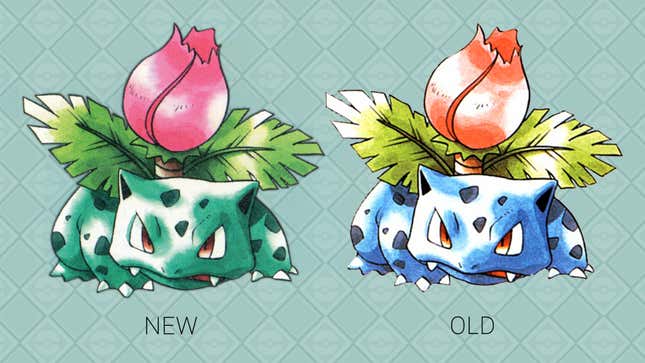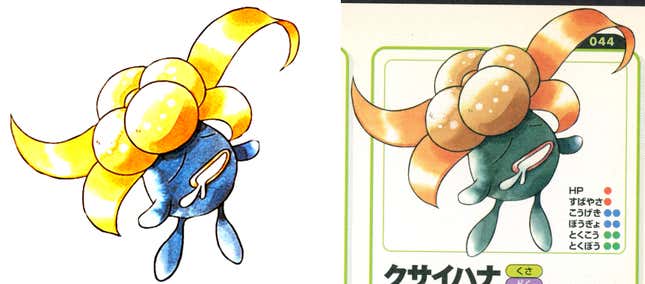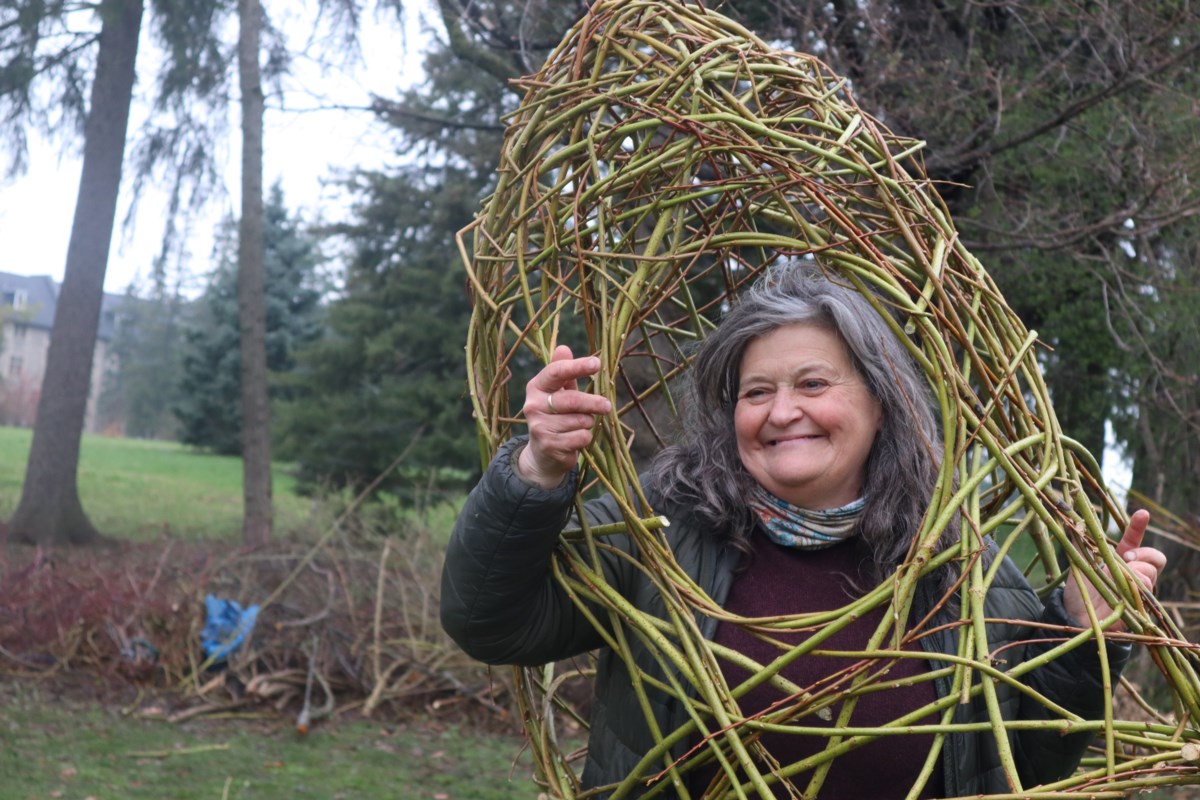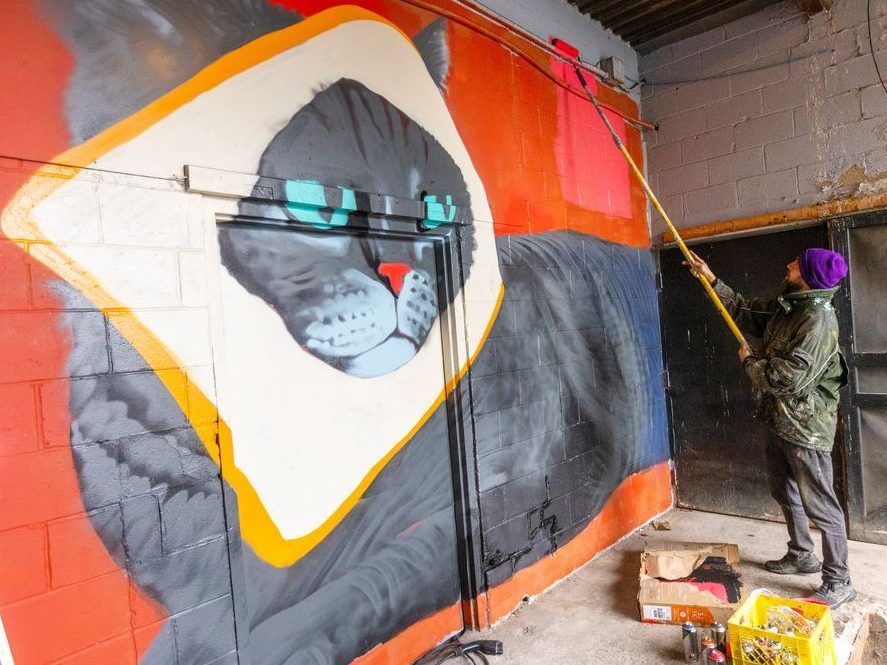Art
Pokémon’s Original Art Can Finally Be Seen In Its Full Glory
|
|


For over 20 years, Pokémon fans have circulated poor-quality scans of the original watercolor artwork for the 251 monsters from the first two generations by renowned series artist Ken Sugimori. These scans were often washed out, and while they had a retro feel to them, weren’t accurate to the original art. Now, thanks to the efforts of online archivists, fans finally have a much better look at Sugimori’s original pieces, and the difference is wild.
Archivist and YouTuber Lewtwo posted a thread on Twitter about the scans, which were provided by software developer Christopher “ExcaliburZero” Wells. These pieces are from the Japan-only Pokémon Gold and Silver Pokédex strategy guide, whereas the ones that have been circulating online are from the official Pokémon Red and Blue and Gold and Silver guides that were sold in the west in the late ‘90s.
Unlike the original pieces and the images in the Japanese guide, the Western scans came out discolored, distorted, and missing details in those books. Despite their quality, they were shipped out and became well-known within the Pokémon community. Looking at the examples Lewtwo has already posted, such as Diglett and Tauros, it’s clear how a lot of the deep colors were lost in those original scans featured in Western materials.
Why are new scans of Ken Sugimori’s art significant?
Speaking to Kotaku, Lewtwo says it’s taken so long for the original pieces to surface because the prevalence of the original scans had distorted fans’ frame of reference for what these pieces are “supposed” to look like. This changed when the original Gen I and II games were ported to Virtual Console, which included HQ digital uploads of artwork of some of the older Pokémon. Lewtwo points to ones, like Eevee and its evolutions as some of the most accurate scans.
“You can literally see all of Sugimori’s imperfections with the tools he used, right down to the way the watercolor bleeds in and around the lineart, to the point we’re convinced that this is the closest we will ever get in being able to scan the original piece,” Lewtwo says.
When Pokémon Blue came out, developer Game Freak made new artwork for each monster, but Lewtwo says the art most western fans know for that game was “incredibly high contrast” compared to the original Red and Green games, which is why characters like Ditto look nearly colorless, despite the Pokémon itself being a deep shade of pink. The distortion extends to the line work and general shape of some Pokémon, which Lewtwo says was “effectively destroying any subtlety intended” in the watercolor pieces. But it was all the community had to work with for a long time.


“The scans of this artwork were remarkably poor, and every source we found appeared to have largely stretched or misshapen art, which stemmed from the sources themselves, and not even from poor scan quality,” Lewtwo says.
Despite it taking this long, Lewtwo says the Pokémon Gold and Silver Pokédex book isn’t particularly rare or even expensive. He was even considering buying it himself for $20 online from a Japanese seller, which he says would be “a steal” at that price for access to the original art.
How did the low-quality Pokémon scans circulate for so long?
What’s curious about the entire situation is how the poor-quality scans became so embedded in the Pokémon community. Lewtwo says it’s likely because they were featured in several pieces of official Pokémon media and merchandise in the West, all starting with its guide books.
“Aside from having artwork that was literally malformed by stretching it (on top of the color changes), there was clearly little care put into preserving the original look, so much so to the point where the Super Game Boy screenshots in the guide also use inaccurate colors, like they were flat changes across the board,” Lewtwo says.


Now, Lewtwo is scanning all 251 Pokémon as they were originally meant to be seen and uploading them to their own Asset Archive, as well as working with sites like Pokémon wiki Bulbapedia to restore the original pieces. He estimates this will be a months-long process. However, some fans have taken issue with this, claiming the original scans will become “lost media” if sources like Bulbapedia switch to these new scans.
Lewtwo responded to this in a lengthy tweet, pointing out that resources like Bulbapedia already allow you to look at previous iterations of assets it has on file, so they wouldn’t just be erased from history. Some were also quick to dispute that these were more accurate scans, but Lewtwo says he cross-referenced these scans with official art like Game Freak’s own assets and artwork seen in the trading card game to ensure their quality.
“We understand the backlash—that people have an affinity for the way the artwork has always looked to them, but our priority has always been preserving how this art is supposed to look as much as possible,” Lewtwo says. “I never grew up with these guides so I can’t really relate, but the inaccurate versions will always exist on Bulbapedia’s file history for those that want them there. That being said, whilst we understand why this feels weird and why there are definitely interpretations up for debate, it’s incredibly disheartening to read whole ‘go f*** yourself’ tweet threads with some seriously rude and heated replies. We’ve dedicated months to preservation already without expecting anything in return, but some of the responses have gone way too far, and are usually really misinformed. We’re all trying to do the best we can, and we appreciate all of the nice, patient comments so far. It means the world to us to see people excitedly asking what their favorite classic Pokémon was supposed to look like with this level of care and attention.”


Despite the pushback, Lewtwo says much of the community has been supportive, and it’s given him the drive to ensure the best-quality versions of these pieces is preserved for use by the Pokémon community.
“This may take a few months—especially if I’m the only one working on it—but we’ve already had some enthusiasm on this particular project crop up in our Discord, which is where we come together to unearth a lot of cool stuff and help each other preserve content as best as possible.”





Art
Collaborative art project highlights the artistic and healing properties of trees – GuelphToday


Combining nature, art and science came to fruition with a collaborative stick weaving project today.
At the How To Draw A Tree Wellness Circle on Johnston Green at the University of Guelph, people were welcomed to join artists Dawn Matheson and Agnes Niewiadomski to create a sculpture made out of sticks.
Trees saved Matheson’s life. She has her own challenges with mental health but being with trees in nature relaxes her and calms her mind.
“It’s just a practice I’ve developed. It grounds me,” she said.
She wanted to bring a bit about what fuels her creativity and helps her mental health to the public with this art project.
The process of the sculpture will continue to unravel in the next couple of weeks as people add sticks to it. About 50 people came out to the event on Wednesday.
Eventually the sculpture will be used as a set piece for a play put on by Guelph Collegiate Vocational Institute (GCVI) students.
“Our idea is always like, challenge yourself to try something that you’re not used to,” said Gerard Gouchro, teacher and minor head of arts at GCVI. Students came to help create pieces of art as part of the sculpture.
The project stemmed from an idea to get people engaged with the wellness circle. An art project called How To Draw A Tree was created by Matheson four years ago. Although the project is finished she hopes people will still engage with it.
The team behind the project is a mix of artists, sound composers, students, poets, ecopsychologists and more. They created sound walks. People can go through a guided tour in the Arboretum while listening to artists talk about their relationship to trees.
There are four guided sound walks onsite and each person has a tree planted at the wellness circle that they connected with while working on the project.
The stick sculpture will be a work in progress. There will be a sign that reads anyone is welcome to add a stick to the sculpture. “It’ll become a true process based community sculpture, maybe it’ll get destroyed, which is fine by me. I’m a process based artist, there’s no final product,” said Matheson.
Most of the materials used for stick weaving are sticks from trees in the Arboretum that were pruned in the winter. Instead of the material being put into a chipper “this was a great opportunity to share it here for this project,” said Justine Richardson, director of the Arboretum.
Matheson hoped with minimal instruction people felt free to add sticks to the sculpture wherever they saw fit.
“It’s just kind of come alive to see everyone’s contributions. I’m really impressed,” said Niewiadomski.
Trees are the ultimate improvisers; they move wherever the sun is, said Matheson. Trees are good listeners and you can’t experience a lot of rejection from them.
“There’s two parallel crises that are the biggest crisis in the world right now. And that’s mental illness and climate crisis,” she said. This is what the project is about.
There will be researchers from the U of G who will be studying the art project and will give feedback to see how beneficial creating a connection between people and the earth is.
The question that runs through Matheson’s mind is; how do we glean life and creativity from trees but also give back to nature?
The art piece will be up for the next couple of weeks on Johnston Green and people can contribute by adding in their own sticks.
Art
PHOTOS: 'Urban art advocates' brighten up London with public murals – The London Free Press


THIS CONTENT IS RESERVED FOR SUBSCRIBERS ONLY
Subscribe now to read the latest news in your city and across Canada.
- Exclusive articles from Ryan Pyette, Dale Carruthers, Jane Sims, Norman De Bono and others. Plus, the Noon News Roundup newsletter on weekdays and the LFP Weekender newsletter on weekends.
- Unlimited online access to London Free Press and 15 news sites with one account.
- London Free Press ePaper, an electronic replica of the print edition to view on any device, share and comment on.
- Daily puzzles, including the New York Times Crossword.
- Support local journalism.
SUBSCRIBE TO UNLOCK MORE ARTICLES
Subscribe now to read the latest news in your city and across Canada.
- Exclusive articles from Ryan Pyette, Dale Carruthers, Jane Sims, Norman De Bono and others. Plus, the Noon News Roundup newsletter on weekdays and the LFP Weekender newsletter on weekends.
- Unlimited online access to London Free Press and 15 news sites with one account.
- London Free Press ePaper, an electronic replica of the print edition to view on any device, share and comment on.
- Daily puzzles, including the New York Times Crossword.
- Support local journalism.
REGISTER / SIGN IN TO UNLOCK MORE ARTICLES
Create an account or sign in to continue with your reading experience.
- Access articles from across Canada with one account.
- Share your thoughts and join the conversation in the comments.
- Enjoy additional articles per month.
- Get email updates from your favourite authors.
Art
Squatters at Gordon Ramsay's Pub Have 'Left the Building' After Turning It Into an Art Café – PEOPLE
:max_bytes(150000):strip_icc():focal(749x0:751x2)/gordon-ramsey-tout-3-091423-e37ac7b907264ee4b9f80a5767133502.jpg)
:max_bytes(150000):strip_icc():focal(749x0:751x2)/gordon-ramsey-tout-3-091423-e37ac7b907264ee4b9f80a5767133502.jpg)
Squatters occupying one of Gordon Ramsay’s London pubs have vacated the property, one week after police were made aware of their activity.
The Camden Art Cafe, an “autonomous cafe” who had identified themselves as the occupants of the celebrity chef’s York & Albany pub, shared the news in an Instagram post.
“We are sad to announce Camden art collective have left the building after being served papers yesterday,” the post read. “We wish those left in the building the best of luck in their endeavours. We hope to be a part of the community again soon, watch this space!!”
The account did not specify who is left in the building, and London’s Metropolitan Police could not immediately be reached by PEOPLE for comment.
On April 13, BBC reported that the Central London pub had been occupied by at least six people, who allegedly boarded the windows. PEOPLE confirmed on April 15 that Ramsay’s pub had been occupied by squatters.
Ray Tang/Shutterstock
The building where York & Albany was located and rented by Ramsay was listed on the market for £13 million, or about $16 million U.S. dollars, in December.
The Camden Art Cafe spoke about the price when they shared an official statement on April 15 about occupying the building.
“We aim to open our doors regularly to anyone and everyone, particularly the people of Camden who have been victims of gentrification and parasitic projects like HS2,” the statement said, adding that they will provide free food and “space to display their art without the ridiculous red-tape that galleries require people to jump over.”
The post continued, talking about how the wealth disparities in Camden made it “fitting that £13 million properties that most locals would never be able to afford to visit should be opened up to all.”
On April 15, the Metropolitan Police told PEOPLE that they were made aware of the squatters at a “disused property” near London’s Regent’s Park on April 10.
“This is a civil matter and so police did not attend as an emergency call out,” the statement continued.
In the statement, the police said they would get involved if necessary: “We [are] in the process of identifying if any subsequent offences [sic] have occurred, and will take action where appropriate.”
Ramsay’s team declined to comment on the situation since it is being handled legally.
According to the U.K.’s official squatter rules on the government website, “Simply being on another person’s non-residential property without their permission is not usually a crime.”
But the website lists vandalization, not leaving when ordered by the court and using utilities as crimes that would permit police involvement.
-



 Tech17 hours ago
Tech17 hours agoiPhone 15 Pro Desperado Mafia model launched at over ₹6.5 lakh- All details about this luxury iPhone from Caviar – HT Tech
-



 Sports17 hours ago
Sports17 hours agoLululemon unveils Canada's official Olympic kit for the Paris games – National Post
-



 Politics23 hours ago
Politics23 hours agoTrump gave MAGA politicians permission to move left on abortion. Some are taking it. – Semafor
-



 Science20 hours ago
Science20 hours agoAstronomers discover Milky Way's heaviest known black hole – Xinhua
-
News15 hours ago
Toronto airport gold heist: Police announce nine arrests – CP24
-



 Tech15 hours ago
Tech15 hours agoVenerable Video App Plex Emerges As FAST Favorite – Forbes
-
Business22 hours ago
Traders Place Bets On $250 Oil – OilPrice.com
-
Business23 hours ago
After 5 years, Budget 2024 lays out promised small business carbon rebate – Global News






